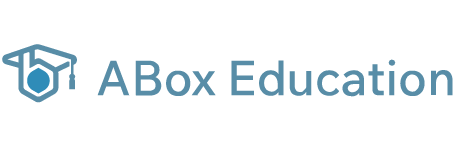AI Is the New Space Race—What Students and Families Need to Know in 2025
- bonniechen54
- Apr 8
- 3 min read
Why AI Education in the U.S. Matters More Than Ever
If the 20th century was defined by a race to the moon, the 21st century is being shaped by a race of a different kind: the global competition to lead in artificial intelligence (AI). But this isn’t just a contest between tech giants or governments. It’s a high-stakes education issue—one that could define career opportunities, national economies, and who gets left behind.
For students—especially those in high school and college—the conversation around AI education in the United States isn’t abstract anymore. It’s about access, equity, employability, and whether American classrooms are preparing the next generation of innovators.

The Global AI Education Gap Is Widening
While the U.S. is just beginning to systematize AI literacy in schools, China already mandates AI courses in K-12 education and aims to be the global AI leader by 2030. According to The 74, China is not only producing more AI talent but integrating AI into mainstream curriculum at a scale the U.S. has yet to match.
In a recent analysis from AgWeb, experts emphasized that failure to prioritize AI education would put the U.S. workforce at a “permanent disadvantage.” Unlike previous tech shifts, AI is expected to impact virtually every sector, from agriculture to finance to healthcare.
Current State of AI Education in the U.S.
The U.S. isn’t completely asleep at the wheel. Organizations like aiEDU, AIandYou, and MIT’s RAISE Initiative are actively piloting programs in AI education, teacher training, and curriculum design. Microsoft, in a recent blog post, called it a “golden opportunity” for America to lead in ethical, inclusive AI education—but warned that this window won’t stay open forever.
Still, these efforts remain fragmented. As Stanford Hazy Research Lab put it in their 2025 blog post, there is no centralized federal strategy, and the lack of coordination means access to AI education is uneven—particularly for underserved schools.
What This Means for Domestic and International Students
Domestic Students Need More than Coding Bootcamps
For U.S.-based students, especially those applying to STEM majors, knowing AI isn’t just a resume boost—it’s a necessity. But most public high schools still don’t offer structured AI courses. Those who get access are often in private or magnet schools, further widening the tech equity gap.
Colleges, too, are adjusting. Some have begun to offer AI minors or integrate machine learning into business and psychology courses, but demand for AI skills far outpaces the curriculum at many institutions.
International Students Are Watching Closely
For international students looking at American universities, the question is increasingly: Is the U.S. still the best place to learn AI? As countries like Canada, Singapore, and the UK roll out national AI education strategies, U.S. institutions risk falling behind as global destinations for AI research and applied learning.
However, the opportunity is still vast. U.S. universities offer unparalleled AI research environments—think OpenAI, Stanford, MIT, and Google DeepMind (now in California). Students who can access these programs still stand to gain world-class training.
Education Experts Speak Out
Loni Mahanta, a senior fellow writing for The 74 Million, argues that "just like the space race catalyzed STEM development, AI should be used to fuel a national education movement."
Microsoft's Brad Smith echoes this, calling on schools to make AI part of every student's learning journey: “Whether you’re going to be a coder or a community organizer, understanding how AI works will soon be as essential as reading and writing.”
Challenges Ahead—Especially for International Students
For students outside the U.S. hoping to gain AI expertise, upcoming challenges include:
Visa Uncertainty: AI-focused programs may become more scrutinized under national security concerns.
High Costs: AI programs are often found in elite institutions, with tuition reaching $70,000+ per year.
Equity of Access: International applicants from countries without strong STEM foundations may find themselves behind before they even apply.
And for domestic students, the uneven rollout of AI curricula means many are at a disadvantage compared to peers in AI-forward states like California or Massachusetts.
Conclusion: The Time to Learn AI Is Now
Whether you’re a student, parent, educator, or policymaker, one thing is clear: AI education is not optional—it’s foundational.
For students preparing for college or thinking about majors, AI is a skill that transcends traditional fields. It matters whether you're going into healthcare, media, agriculture, or law. For international students, the U.S. still offers incredible opportunity—but only if institutions invest in staying ahead of the curve.
The new space race has begun. The question is: Will U.S. schools lead the way—or watch from the sidelines?




Comments